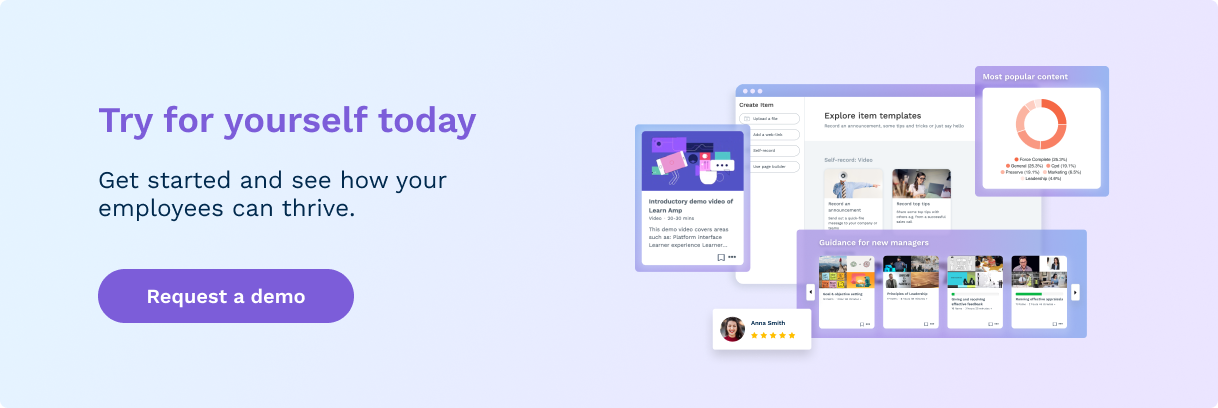Compliance is growing in importance, and becoming a part of business as usual in all industries. So, how can we go from just ‘being compliant’ in the technical sense, to building a risk-aware and resilient organisation?
Regulatory and compliance expectations of employees have grown - but in many organisations, compliance training is still treated as the ‘poor relation’ of learning and development.
To fix your compliance training, and encourage employees to become risk-aware, ask yourself the following critical questions:
1. Are you treating your employees like part-time lawyers?
Many companies oblige front-line workers to trot out compliance regulations without understanding them - or to memorize lengthy compliance policies. Not only is this unhelpful; it’s also usually unnecessary. For example, what is the benefit of requiring call-centre workers to parrot memorized compliance verbiage when on the phone with a customer? Instead, try to identify opportunities to use automated forms with clear language, and save your employees time and effort.
2. Are your employees overwhelmed with information?
We’re in the age of acceleration. Today’s workers are struggling to adapt to new digital technologies, hybrid or remote work, market upheavals, and many other new challenges. If you overwhelm your employees with constantly changing compliance regulations, you’re simply adding to their cognitive load without bringing more value to your business.
Instead, keep compliance training on a need-to-know basis. Instead of one-size-fits-all training modules, segment your learners into groups based on how much compliance knowledge they actually need. In Learn Amp, for instance, you can create learning channels segmented by roles, so that employees only ever see the information they need, and avoid information overload.
3. Are you creating a culture of compliance?
It’s nearly impossible to learn content that has no relevance or interest to us. But doesn’t that describe most compliance training? Instead of forcing employees to wade through tedious compliance modules, start to make risk management a part of your everyday culture. Risk should be mentioned during meetings, be a part of strategic discussions, be central to ‘business as usual.’ That’s the only way to go from being technically compliant to becoming a risk-aware and well-protected business.
4. Are you applying learning design best practices to compliance training?
At Learn Amp, most of us started in Learning and Development - and we saw too many businesses treating compliance completely differently from all other learning content. Far too often, compliance training is developed by compliance experts - whereas it would make far more sense to have compliance training created by training experts!
With leadership from L&D professionals, compliance training can become well-designed, engaging, and - dare we say it - even enjoyable!
5. Have you really considered the desired learning outcomes for compliance training?
It’s worth remembering that the desired learning outcomes for compliance training should not be a series of checked boxes confirming learner completion! The outcome of effective compliance training should be a more risk-aware, resilient, safe, and ethical company culture. To deliver that outcome, compliance training must be designed to impact employees’ knowledge, skills, and behaviours (KSBs).

|
Get actionable insights around Employee Experience and People Development |
6. Are you using all stick and no carrot?
Have you considered learner incentives? If the only incentives your learners have to engage with compliance training are punitive, you’re unlikely to see high levels of engagement! As with other types of learning, make sure that compliant behaviour, demonstrations of risk-aware decision-making, and familiarity with role-specific regulations are recognized and rewarded. For instance, add compliance objectives to individual employee development pathways, and then acknowledge their performance during manager one-to-ones and performance appraisals.
7. Have you built a culture of trust?
To create a truly risk-aware organisation, you need to make sure that employees feel safe to ask questions, challenge the status quo, or acknowledge when they’ve made a mistake or feel unsure about a point of compliance. Read our blog on developing a feedback culture here.
8. Are you taking advantage of social learning?
To fix compliance training, you need to consider your learning audience. For some groups, gamification can be highly effective - and there are some great tools built into Learn Amp that can make this easy to implement. However, other learners find gamification patronizing - but enjoy collaborative learning approaches, such as flipped learning sessions or online Q&A. Again, segmenting your learners into groups and designing a different compliance training experience for each will increase learner engagement dramatically.
9. Have you built compliance training into the employee journey?
With the “Great Resignation”, businesses are exposed to even greater risk as usual. High levels of turnover mean a constant influx of new joiners, who may be unaware of specific regulations. Compliance needs to be a part of the whole employee journey, from how you handle induction to how you manage employee exits. Instead of pushing standardized, one-off compliance training modules onto your learners, engage their interest with risk-aware learning experiences throughout your L&D program.
10. Have you considered assessment and reinforcement?
To embed compliance into the fabric of the organisation, you will need to switch up how you assess employee risk awareness. Instead of an annual ‘tick box’, use regular pop-quizzing and compliance refreshers to keep risk awareness front of mind. You should also make sure that employees have opportunities to apply their knowledge in practice. One example could be to set up mock phishing emails, or “Phishing Drills”, which can be sent to all employees. Any employees that take the “bait” can then receive a quick refresher module on cybersecurity and compliance.
To get a more detailed understanding of how to build risk management into your learning and development program, and for more ideas of how to transform compliance training, watch our on-demand webinar: Examining Compliance And Regulation: How To Really Manage Risk (Rather Than Just Be Compliant)!




